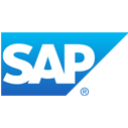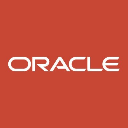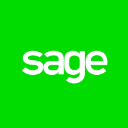5 examples of ERP solutions that will take your business to the next level!

Are you looking for an example of ERP to test... and approve? SAP, Microsoft, Sage... some of the big names in IT solutions have developed their own Enterprise Resource Planning platforms.
It has to be said that these tools have become indispensable over the years. By centralising all company processes and data, they are proving to be a powerful aid to productivity and performance.
If you want to take the plunge, this article is for you: to help you understand what these Integrated Management Software packages have to offer, we reveal which are the best-known and most effective ERP software packages on the market, and why.
But before we go any further, let's take a look at the characteristics of this type of platform.
What is ERP?
Definition of ERP software
ERP (Enterprise Resource Planning ) is a system used by companies to manage and automate all their operational and administrative processes.
It centralises the management of a wide range of operations by making available a range of modules, dedicated for example to :
- accounting
- human resources management
- sales
- production
- logistics
- planning.
ERP also streamlines workflows by consolidating data and providing a real-time overview of your company's activities. It also makes inter-departmental communication more fluid, by eliminating information silos.
The different types of ERP
Since each company has different requirements and resources, there are several categories of ERP:
- General-purpose ERP: contains the basic functionalities needed by most organisations.
- Business or specialist ERP: in contrast to the previous category, this is tailored to specific needs or industries. E.g. for the building industry, the healthcare sector, e-commerce, education, etc.
- Open source ERP: its code is accessible and can be modified. Perfect for building a solution that's both customised and cost-effective!
👉 We'll come back to this category of ERP in detail later in the article. - Cloud ERP : hosted on remote outsourced servers and accessible via the internet. Perfect for avoiding maintenance costs!
- SaaS ERP: a distribution model where the software package is offered as an online service, generally in the form of a subscription.
- Proprietary ERP: its source code is owned by the company that develops it. To use it, you generally have to put your money where your mouth is.
- Mobile ERP: a version of ERP optimised for smartphones and tablets.
Having said that, let's move on to the examples of ERP you're looking forward to 😀.
1 of 5
 Furious |  SAP S/4HANA |  Microsoft Dynamics 365 |  Oracle ERP Procurement Cloud |  Sage 300 |
|---|---|---|---|---|
| For companies with 2 to 250 employees | For all companies | For companies with more than 1 employees | For companies with more than 1 employees | For all companies |
| See software | See software | See software | See software | See software |
| Learn more about Furious | Learn more about SAP S/4HANA | Learn more about Microsoft Dynamics 365 | Learn more about Oracle ERP Procurement Cloud | Learn more about Sage 300 |
Furious
Furious is an all-in-one business software package, designed specifically for companies that sell man-hours/fees/assignments. It is therefore perfectly suited to the needs of agencies, consultancies, service companies, ESNs and engineering firms.
Developed to optimise processes and boost the profitability of professionals, Furious incorporates a wide range of functions grouped into different modules: sales management, projects and schedules, production, finance and pre-accounting, HR and cash management.
Where the Furious ERP makes the difference is in its ability to understand the specific problems of its target audience, and how to solve them. For example, it allows you to closely monitor all aspects of a project (profit, deadlines, quality, etc.), effectively manage the associated budgets and intelligently manage staffing. And thanks to its many automated functions, you can save time on all these tasks.
Finally, let's not forget the analytical power of the solution. With more than 200 thematic dashboards and sales projections, Furious is an invaluable ally when it comes to judiciously managing your operations and making the best strategic decisions.

Furious
Microsoft Dynamics 365
In the ERP/CRM family, Microsoft Dynamics 365 stands out for its power and flexibility, so rich is its functionality. The software is designed to meet the varied needs of businesses of all sizes and in all sectors, from SMEs to major corporations in industry, healthcare and distribution. It has won over big names such as Coca-Cola, HP and Siemens.
More specifically, Microsoft Dynamics 365 includes a wide range of modules to support different processes: sales, marketing, human resources, supply chain, finance, project management, etc. This suite of tools makes it undeniably one of the most comprehensive ERPs on the market.
All these business applications are designed to integrate easily with each other, as well as with other Microsoft products such as Office 365. In this way, you create a fluid, automated working ecosystem that's 100% aligned with your reality on the ground. The icing on the cake is that these solutions can be deployed quickly, to the benefit of your agility!
Finally, it's worth noting that Microsoft is at the cutting edge of innovation. The publisher is constantly evolving its ERP to keep pace with new technologies, enriching it with artificial intelligence, for example.

Microsoft Dynamics 365
Oracle
Oracle ERP, also known as Oracle ERP Cloud, is a suite of business solutions from Oracle Corporation. Aimed at a wide range of organisations, from SMEs to large global groups, its customers include companies such as FedEx, Dropbox and Wendy's.
In terms of functionality, Oracle ERP supports the following operations: financial management, project management, purchasing, risk management and compliance, enterprise performance management, production and supply chain. It also includes advanced analytical functions, including predictive analysis.
A key feature of this system is its built-in artificial intelligence, enabling you to automate your business processes and most time-consuming tasks to the maximum, significantly boosting your productivity. But Oracle's AI technology also promises to make better decisions, by anticipating the new realities likely to impact your business.
Regularly updated and evolving, Oracle is therefore an example of the perfect software package, capable of accompanying you throughout the growth of your company.

Oracle ERP Procurement Cloud
Sage 300
Sage 300, the all-in-one business management software designed primarily for small and medium-sized enterprises, has already won over more than 40,000 customers worldwide. Developed by Sage, the long-established ERP publisher, it offers a suite of modules dedicated to accounting, operations and distribution.
It includes many useful functions for financial, purchase order and inventory management. Sage 300 also offers payment tools (PayPal, Stripe, etc.), which can be integrated directly into your invoices to speed up payment.
Sage 300 is appreciated for its ability to handle multinational operations: it is possible to manage your finances in several currencies and locations. The software also integrates seamlessly with your existing applications. So you can deploy a fluid and robust working ecosystem.
Finally, if you want to enhance the solution, it's easy to add other Sage modules (manufacturing and distribution, productivity enhancement, etc.). We're thinking in particular of analytical tools such as Sage Data & Analytics, which provides powerful financial reports to significantly increase your turnover.

Sage 300
SAP S/4HANA
SAP S/4HANA is a new-generation cloud ERP designed for fast-growing businesses. It brings together all the key functions you need to manage your business effectively and responsively:
- Analyse data in real time: access dynamic dashboards to make informed decisions, without waiting until the end of the month.
- Automate financial processes: accounting, closing, compliance... everything runs in the background.
- Optimise the supply chain: stock management, demand forecasting, logistics tracking, all in real time.
- Plan and monitor production: adapt resources, schedules and costs in just a few clicks.
- Manage human resources: recruitment, talent management, payroll, training - everything is centralised.
- Connect ERP to other business tools: native compatibility with other SAP solutions and possible integrations with third-party systems.
What sets it apart? A healthy dose of AI, machine learning and real-time analytics for faster, more accurate decisions. In short, an ERP that anticipates rather than reacts.
The platform is modular, so it can be adapted to every sector of activity: industry, retail, healthcare, energy, and so on. All this, with rock-solid scalability to support the expansion of companies with 51 to 5,000 employees. Its customers include such big names as Bosch, Skoda and FC Bayern.
It's the perfect solution for CFOs, CTOs and innovation managers who want to get on with their digital transformation!

SAP S/4HANA
👉 To complete this list of ERP software, discover our selection of over 100 Enterprise Resource Planning platforms.
What are the differences between proprietary ERP and open source ERP?
Proprietary ERP or open source ERP?
This is the dilemma faced by any company preparing to install an Enterprise Resource Planning system.
So what's the difference between the two?
A proprietary ERP refers to a platform offered by a specific publisher, for which you have to pay a licence or subscription fee.
💡 If you're looking for an example of a proprietary ERP, refer to the software mentioned above.
An open source ERP, on the other hand, has publicly accessible and modifiable code, making it a decidedly flexible and customisable tool. Opting for this type of platform therefore means reducing the costs associated with its acquisition, including those arising from bespoke developments.
☝️ On the other hand, beware of the myth that open source is free. In fact, it is often necessary to pay for certain modules or extensions.
One of the other advantages of open source ERP is that it has a large community of developers and contributors, guaranteeing continuous improvement.
On the downside, however, it requires technical skills to implement, customise and maintain.
What are the advantages of ERP?
Finally, a quick reminder of all that ERP has to offer!
- Time and productivity savings. By automating processes and harmonising data, ERP saves teams a considerable amount of time in their day-to-day tasks.
- ✅ Cost savings. Using this type of software means saving resources. All the more reason to make valuable savings!
- ✅ Real-time visibility. ERP provides an instant overview of commercial and administrative activities. This in turn encourages informed decision-making.
- ✅ Access to information. Gone are the days when teams spent hours searching for information: everything is centralised within the tool! As a result, communication and co-ordination between staff is much smoother.
- Flexibility. Thanks to its modular nature, ERP is capable of supporting any type of business. Companies can select their functionalities according to their needs and budget.
- ✅ Data management. The software centralises and manages data, reducing duplication and other inconsistencies.
- ✅ Process optimisation. An ERP helps to identify bottlenecks in your processes, with a view to improving them.
- ✅ Resource management. With an ERP, you can allocate human, financial and material resources more efficiently.
In conclusion
You've just seen some of the best-known ERPs on the market. And there are many more, for companies of all sizes and industries.
The main purpose of this article is to help you understand what these software packages are capable of. To understand how they can help you solve your own problems.
Now all you have to do is find the rare gem that will take your business to the next level 🚀.
Article translated from French

Currently Editorial Manager, Jennifer Montérémal joined the Appvizer team in 2019. Since then, she's been putting her expertise in web copywriting, copywriting and SEO optimisation to work for the company, with her sights set on reader satisfaction 😀 !
A medievalist by training, Jennifer took a short break from fortified castles and other manuscripts to discover her passion for content marketing. She took away from her studies the skills expected of a good copywriter: understanding and analysing the subject, conveying the information, with a real mastery of the pen (without systematically resorting to a certain AI 🤫).
An anecdote about Jennifer? She stood out at Appvizer for her karaoke skills and her boundless knowledge of musical dreck 🎤.